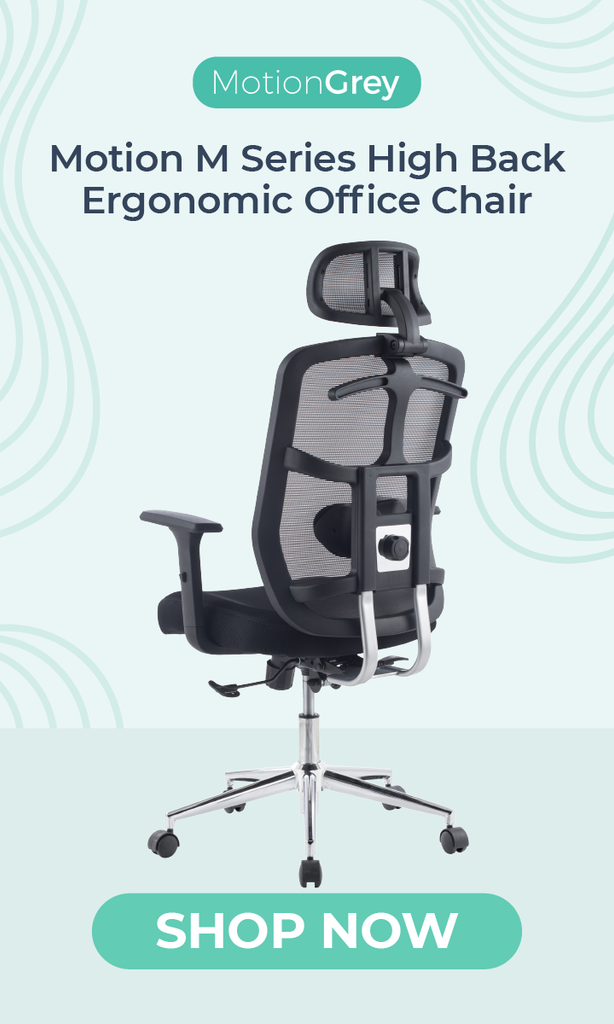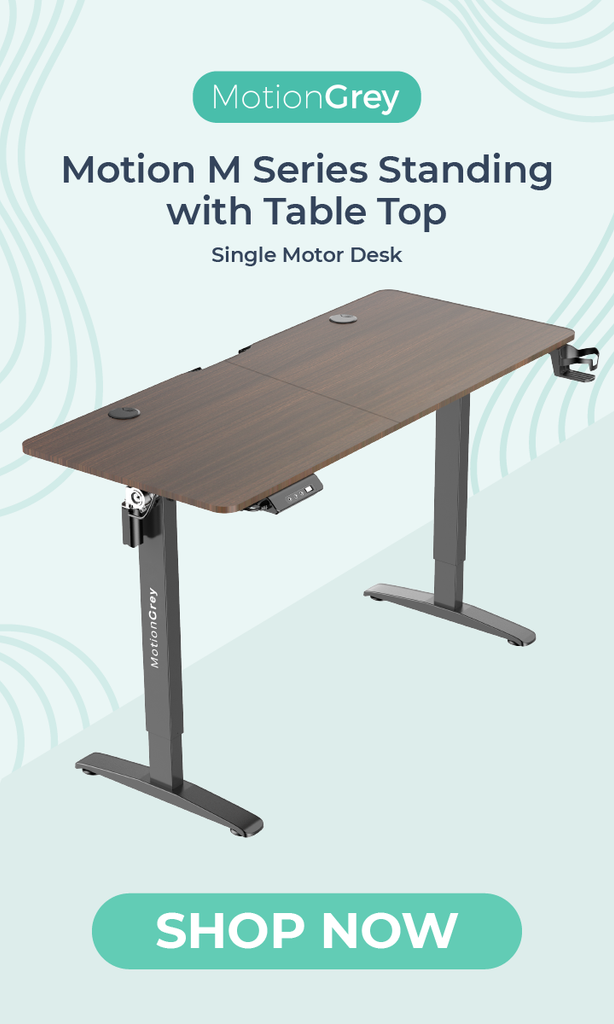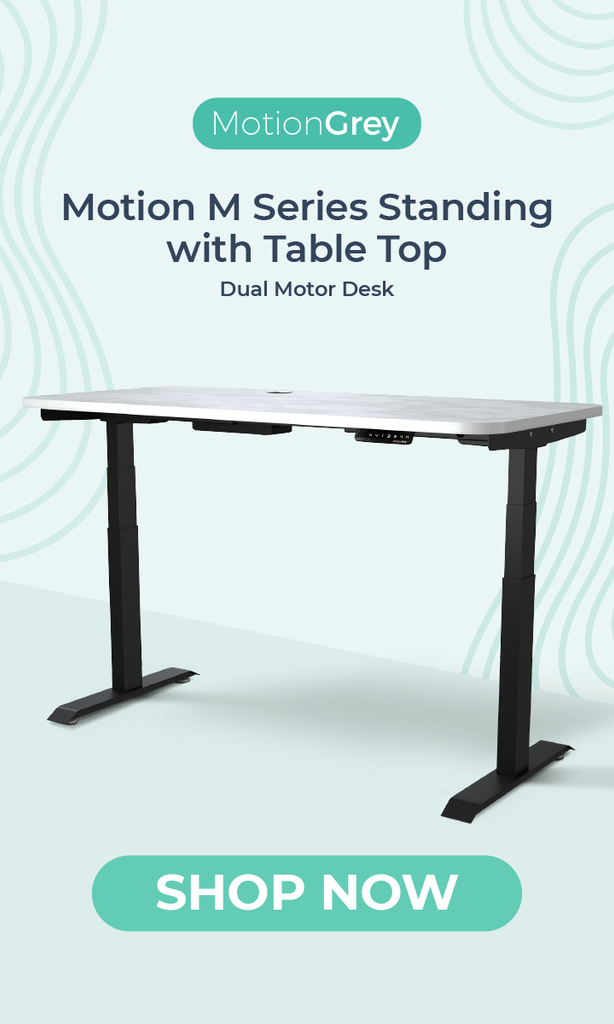How to Fix a Sinking Office Chair
Your ergonomic office chair starting to sink? Office chairs sink primarily due to issues with the pneumatic cylinder or its gas lift mechanism, which can wear out over time. The importance of fixing sinking office chairs promptly lies in maintaining ergonomic comfort. Ergonomics is crucial for ensuring a healthy and productive workspace. It promotes proper posture and reduces the risk of musculoskeletal disorders associated with prolonged sitting.

When an office chair sinks, it compromises proper body alignment, leading to discomfort and potential health problems. Fixing the issue is important to restore the chair's height-adjustment functionality, allowing you to customize your seating position according to your ergonomic needs. Failure to address the problem with sinking office chairs can result in prolonged discomfort, decreased productivity, and increased risk of developing ergonomic-related injuries.
Guide to Fixing a Sinking Office Chair
A sinking office chair can be an annoying and uncomfortable issue, especially if you spend long hours at your desk. But fear not—fixing this problem is often easier than you might think. In this guide, we'll walk you through a general process to fix a sinking office chair, ensuring you can enjoy ergonomic comfort for hours on end.
Diagnose the Issue
Before you start any repairs, it's crucial to understand why your ergonomic office chair is sinking. Typically, this problem occurs due to issues with the pneumatic cylinder or gas lift mechanism. Over time, this component can wear out, causing the ergonomic office chair to lose its height-adjustment functionality.
Specific symptoms indicating problems with the pneumatic cylinder or gas lift mechanism include:
- The gradual sinking of the chair when you sit on it.
- Inability to maintain a consistent height adjustment.
- Audible hissing or leaking sounds when adjusting the chair's height.
- Uneven or jerky adjustment when using the height lever or knob.
- Visual signs of damage such as cracks, dents, or fluid leaks on the pneumatic cylinder.
Gather Your Tools
To fix your sinking office chair, you'll need a few basic tools, including:
- A flat-head screwdriver
- A rubber mallet or hammer
- A pipe wrench or locking pliers
- Lubricant (optional)
- Replacement parts (if necessary)
Disassemble the Chair
Before disassembly, ensure that the ergonomic office chair is unplugged in case it contains electronic components to avoid accidents. Keep track of screws and fasteners during disassembly to facilitate reassembly later.
Start by flipping your ergonomic office chair upside down on a flat surface to access the underside. Most office chairs have a cover or panel that conceals the pneumatic cylinder and other mechanisms. Use your flat-head screwdriver to remove any screws or fasteners securing the cover in place.
Inspect the Pneumatic Cylinder
Once you've exposed the pneumatic cylinder, visually inspect it for any signs of damage or leakage. If you notice cracks, dents, or fluid leaks, the cylinder likely needs to be replaced. In some cases, you may also need to inspect the gas lift mechanism for wear or damage. If no visible damage or leaks are present, it’s possible that internal issues might be causing the sinking. Consider seeking professional assistance or further diagnostics, if necessary, to fix the office chair.
Remove the Pneumatic Cylinder
Using your pipe wrench or locking pliers, firmly grip the base of the pneumatic cylinder and twist it counterclockwise to loosen it from the chair's base. Be careful not to damage the cylinder or surrounding components during this process. Once loosened, you should be able to pull the cylinder out of the chair's base. Support the ergonomic office chair securely during this step to keep it from collapsing or tipping over.
Replace or Repair the Cylinder
If your find that the pneumatic cylinder is damaged beyond repair, you must replace it with a new one. You can purchase replacement cylinders from office supply stores or online retailers. Alternatively, if the cylinder is only experiencing minor issues, you may be able to repair it by replacing seals or other internal components.
Identify compatible replacement parts or perform repairs according to the chair's specifications. Research specific brands or models known for quality replacements, if needed.
Reassemble the Chair
Once you've repaired or replaced the pneumatic cylinder, reinsert it into the chair's base and tighten it securely using your pipe wrench or locking pliers. Make sure all components are properly aligned before reattaching the cover or panel to the underside of your ergonomic office chair. Ensure proper alignment of components during reassembly to avoid misalignment issues that could affect the stability of your ergonomic office chair.
Test the Chair
After reassembly, flip the ergonomic office chair upright and test its height-adjustment functionality. Sit on the chair and adjust the height using the lever or knob to ensure it remains stable and doesn't sink unexpectedly. Once you find everything working correctly, congratulations! You've successfully fixed your sinking office chair!
Test the chair multiple times after repair to confirm stability and functionality over time, as some issues may not be immediately apparent.
Maintenance Tips
To prevent future issues with office chairs, consider the following maintenance tips:
- Regularly clean and lubricate the pneumatic cylinder and gas lift mechanism to prevent corrosion and ensure smooth operation.
- Periodically check for loose screws or fasteners and tighten them as needed to keep the chair stable and secure.
- Regularly inspect the chair for signs of wear and tear, addressing any issues promptly to prevent further damage.
- Encourage proper chair usage habits, such as avoiding excessive leaning or sudden movements that could strain the components.
- Consider investing in a chair mat to protect the chair's base and wheels, especially on carpeted surfaces, to reduce wear and tear.
- Educate yourself on the importance of ergonomic seating and proper adjustment of ergonomic office chair settings to prevent premature wear on components.
Safety Considerations to Fix Sinking Office Chairs
Prioritize safety by wearing protective gear such as gloves and safety goggles throughout the repair process. Work in a well-lit area to ensure clear visibility, and avoid rushing through the repair steps to minimize the risk of accidents or injury.
In conclusion, fixing a sinking office chair is essential for maintaining ergonomic comfort and preventing discomfort and potential health issues associated with poor posture. By promptly addressing the issue and following the repair steps outlined in this guide, you can restore your office chairs to optimal functionality. Remember to prioritize maintenance to prevent future issues, ensuring prolonged comfort and productivity in the workplace.
About Us
MotionGrey is a Canadian standing desk company that specializes in ergonomic furniture. We supply and install only the best quality standing desks and ergonomic chairs in the country. We offer free shipping within Canada and the US.
What made you switch to standing desks? Our products are designed with wellness as the focal point. From our electric standing desks to our office and gaming chairs, we deliver best value by putting your health, safety, and comfort as top priority. Boost your creativity and level up work performance. We want you to create great outcomes so we’re providing you only the best tools to make them possible.
If you are not satisfied with your purchase, check out our Refund Policy.









